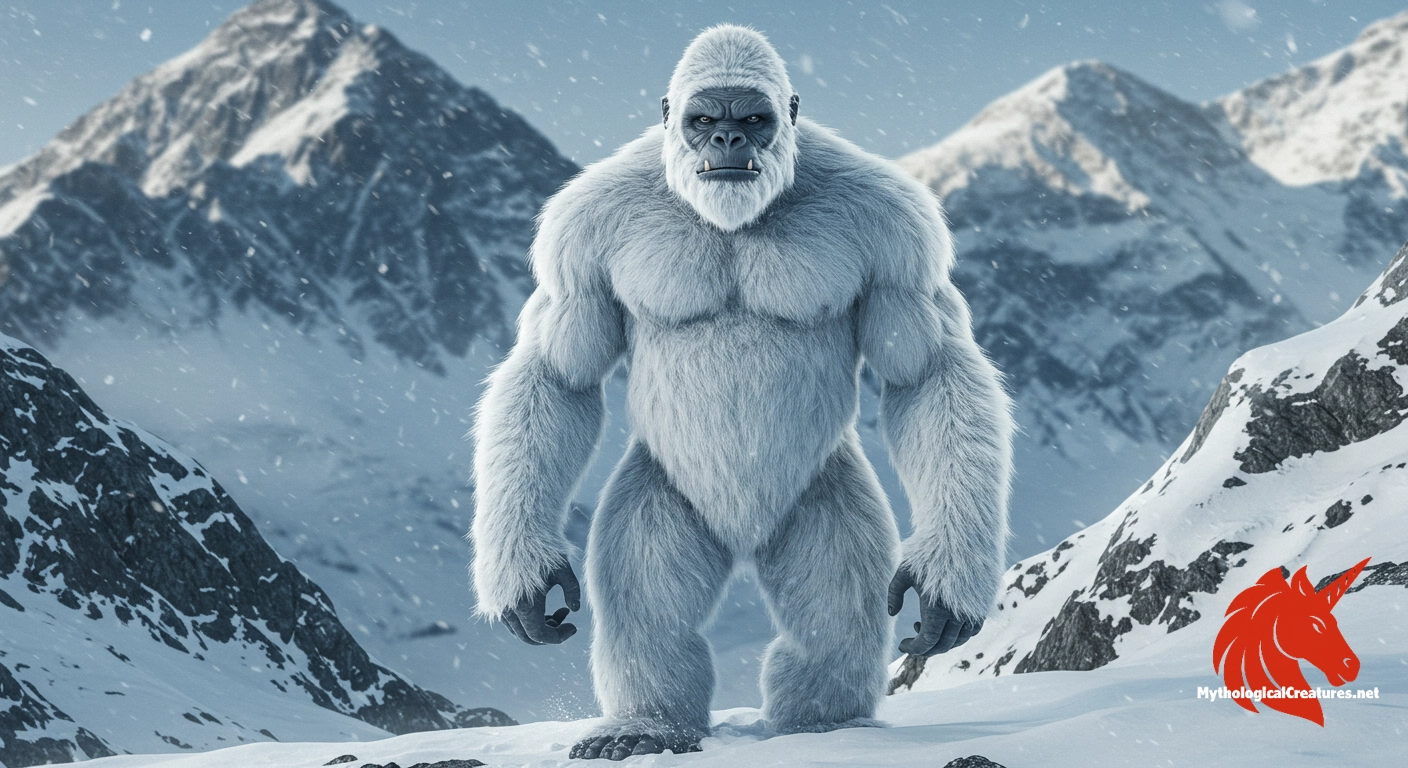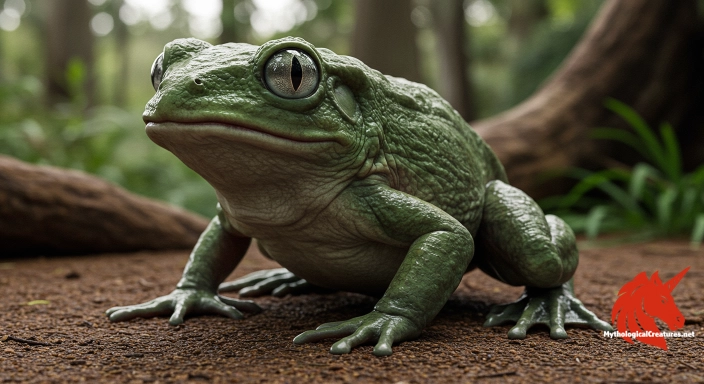Yeti: The Yeti, also known as the Abominable Snowman, is an elusive, ape-like cryptid said to inhabit the Himalayan mountains.

Yeti
Yeti - Symbolises the mystery and allure of the uncharted Himalayan wilderness and has become an enduring icon in modern cryptozoology.
Origins & First Encounters
The Yeti is a captivating enigma that has captured the imagination of local Himalayan communities and global enthusiasts alike. Its roots extend deep into the oral traditions of indigenous peoples who have long recounted tales of a mysterious, forest-dwelling giant. Early mentions of this elusive creature appear intertwined with the longstanding cultural heritage of those who inhabit the high-altitude regions, where every shadow and footprint sparks wonder. Generations of mountain folk have passed down stories that blend natural observation with myth, positioning the Yeti as both protector and portent. The creature’s reputation as the Abominable Snowman in Western popular culture has only added to its mystique, colouring perceptions with a blend of awe and trepidation. Its saga is emblematic of the intersection between human storytelling and nature’s imperatives, embodying the raw, unyielding spirit of the Himalayan wilderness. Historical records and anecdotal evidence, though sometimes contradictory, lend the narrative an enduring ambiguity. The Yeti emerges not only as a being of the icy peaks but also as a symbol of the margins where reality and myth intertwine. The legends continue to evolve, mirroring the changing social and environmental landscapes of the region. Intriguingly, the creature stands as a testament to humanity’s perpetual quest to understand and contextualise the unknown.
Source Texts & Tale Variants
Historical accounts and local folklore provide a patchwork of evidence that has fueled the Yeti’s legend over the centuries. Embedded in the spoken traditions of Himalayan communities are narratives that have been orally transmitted long before any written record could be established. Travellers and early mountaineers documented curious sightings and suggestive tracks, each account adding a layer of intrigue to the creature’s mythos. While there are no definitive ancient manuscripts devoted solely to the Yeti, scattered references in regional chronicles and religious texts hint at a respected, if mysterious, presence in the mountains. Eyewitness testimonies collected over time, often detailed in expedition journals, portray the creature in differing lights—sometimes as a benign guardian and at other times as a fearsome adversary. Disputed photographs, video recordings, and even cast imitations of footprints have been introduced into the accumulating body of evidence, each sparking debates amongst enthusiasts and sceptics alike. The inconclusive nature of these materials has spawned a multitude of story variants, each coloured by the biases and expectations of its recorder. Compilations of regional myths reveal that the tales of the Yeti extend far beyond any singular incident or interpretation. This medley of sources ensures that the Yeti legend remains a vibrant, albeit ambiguous, component of Himalayan cultural heritage. Ultimately, the accumulation of both ancient lore and modern media continues to fuel discussions about the creature’s true nature.
Form & Powers
Descriptions of the Yeti paint a picture of an imposing, ape-like figure that seemingly blends human and primate features. Early accounts often describe a towering silhouette cloaked in dense, shaggy fur, a natural adaptation to the freezing climes of its mountainous home. The creature is frequently portrayed as possessing a broad, muscular frame, with limbs that are both robust and agile enough to navigate treacherous, icy slopes. Eyes that are deep-set and expressive contribute an enigmatic quality to its visage, reflecting an intelligence that belies its wild exterior. Its face, rugged and somewhat indistinct, is sometimes said to exhibit a mix of human-like curiosity and primal intensity. Varying reports speak of fur colouration ranging from stark, snowy white to darker grey tones, each variation lending the Yeti a chameleon-like ability to blend into its environment. The depiction of its hands and feet often suggests enormous dimensions, with long digits and sturdy claws hinting at a creature capable of both climbing and enduring harsh weather. Artistic and eyewitness renditions occasionally highlight a sweeping, unkempt mane that adds to the aura of mystery during winter storms. Frequent mentions of enormous footprints serve as tangible, albeit contested, reminders of its colossal presence. Overall, the physical portrayals contribute to a composite image that straddles the boundary between the fantastical and the biologically possible.
Regional Faces
The myth of the Yeti is as varied as the rugged terrains it is said to inhabit, with regional narratives showcasing a spectrum of interpretations. Among the Sherpa and other Himalayan communities, the creature is often enveloped in spiritual reverence, portrayed at times as a sacred guardian rather than a malevolent beast. In Tibetan lore, a similar yet subtly distinct character is described, one that embodies both the mysticism and the capricious forces of the high mountains. Western adaptations have tended to amplify its ferocity, reducing the creature to a more singular notion of the abominable and the monstrous. This divergence in portrayal underscores the layers of cultural significance attached to the being in its native context versus its foreign reception. Local tales focus on the Yeti’s elusive presence and its role as an omen or protector, reflecting practical relationships with the harshness of nature. Variations even appear in its physical description; some local accounts depict a leaner, more agile figure, while others insist on a robust and burly manifestation. The creature’s dual nature, as both a tangible inhabitant of the high passes and an allegorical figure, demonstrates how environment, tradition, and adaptation interact in regional myth-making. In this way, the Yeti myth is not monolithic but a diverse tapestry woven by centuries of lived experience and natural wonder.
Cultural Parallels
The Yeti shares a kinship with a host of other elusive cryptids that emerge in disparate cultures around the globe. Its most well-known parallel is with North America’s Bigfoot, a creature similarly shrouded in mystery and often described with comparable physical traits such as towering height and a robust, hairy frame. Both legends epitomise the intersection of nature’s untamed wilderness with the human yearning for discovery. In various parts of Asia and even in isolated pockets of Europe, similar tales feature wild, bipedal beings that blur the lines between myth and reality. These cross-cultural echoes suggest that the archetype of a wild, unseen giant reflects a universal human narrative about the unknown edges of civilisation. Artistic depictions and local recounting alike echo motifs of ambivalence—fear tempered by admiration for the brute forces of the natural world. While the Yeti retains a unique Himalayan flavour, its comparisons with creatures like Bigfoot reveal shared themes of survival, mystery, and the clash between modernity and the ancient wild. Comparative lore thus enriches our understanding of the Yeti, framing it as part of a broader suite of legendary beings that continue to fascinate and puzzle. Across cultures, these legends serve as metaphors for the encounter with nature’s vast, unexplored domains, making each narrative deeply resonant in its own right. Ultimately, the Yeti’s relationships with other cryptids enhance its status as a global symbol of nature’s enduring mystique.
Legacy & Modern Evolution
The evolution of the Yeti narrative reflects the dynamic interplay between enduring myth and modern media fascination. Its origins as an oral tradition slowly transformed through the lenses of exploration and scientific inquiry into an icon of cryptozoology. Over the decades, the creature has shifted from a locally revered and sometimes feared mountain spirit to a figure of global pop culture status. Advances in technology and the rise of digital platforms have enabled a proliferation of disputed footage and photographic claims that continue to stir both wonder and scepticism. Its image has been re-imagined in literature, film, and art, often serving as a symbol of the untamed and inscrutable forces of nature. Contemporary depictions balance the romantic allure of the unknown with modern demands for empirical evidence, creating a legacy that is as much about the journey of discovery as it is about the creature itself. This enduring myth also acts as a cultural mirror, reflecting the changing ways communities interact with their natural environment amid the pressures of modernisation. The Yeti’s remarkable persistence through centuries of storytelling underscores the human fascination with mysteries that defy easy explanation. It remains a potent emblem of rugged resilience and the complex relationship humans have with the wild. Today, the Yeti continues to inspire both scientific debate and artistic licence, cementing its place as a legendary figure whose story evolves with each new generation of believers and sceptics alike.
Interesting Fact
An intriguing facet of the Yeti myth is how it bridges ancient Himalayan folklore with modern cryptozoology, illustrating how cultural legends adapt over time to incorporate contemporary mysteries.
Quick Creature Info
Origin:
Features:
Associations:
Our Mythic Legendary Rating:

Also Sometimes Known As:
Habitat:
Supernatural Powers:
Physical Attributes:
Abilities:
Behavior:
Weaknesses:
Lore:
Related Creatures, Tales or Lore
- BBigfoot
- SSasquatch
- SSkunk Ape
References
Discover Another Mythical Legend You May Not Have Heard Of?
Uncover the mysteries of ancient folklore and expand your knowledge of legendary beings from cultures around the world.
Dare to Meet the Tiddalik....
Mythical Disclaimer: The images and data on this site are derived from various historical and literary sources, but we have found that many myths often have multiple versions and interpretations across references, sometimes contradictory. As a result, these creature depictions are artistic interpretations—imaginative blends of folklore, legend, and a dash of AI guesswork. Because creature descriptions vary widely, our illustrations and accompanying information represent our best effort to honor mythology while bridging creative gaps. Enjoy these interpretations—just remember, we've done our best to respect the stories and validate available data, but in the realm of mythology, details often shift, imagination leads the way, and nothing is ever set in stone!
Curated by the Mythological Creatures Team (rev. May 2025)
